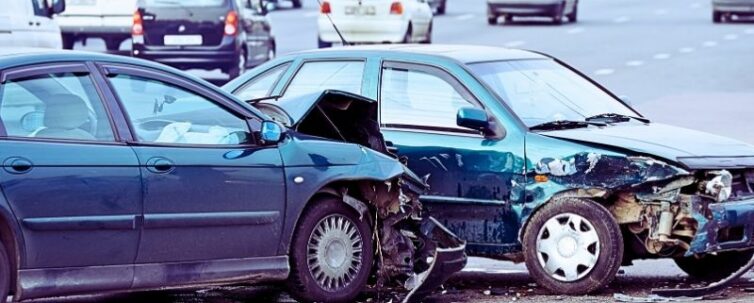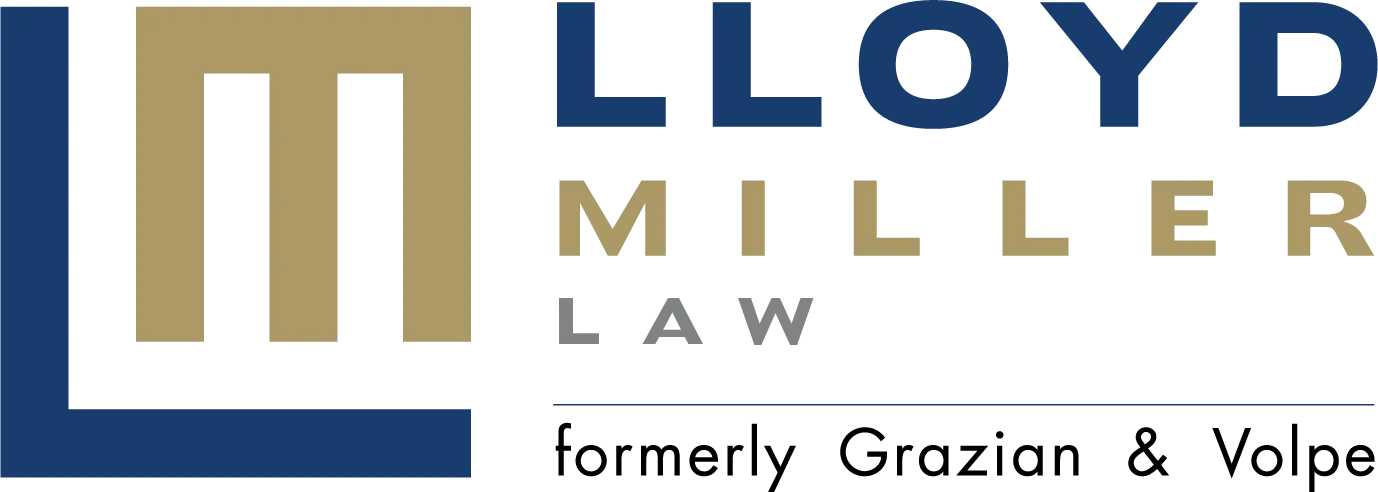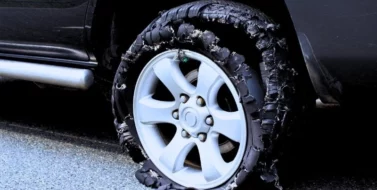In T-bone accidents, the driver who acted negligently on the road by not following traffic signs or committing traffic violations is usually at fault. However, while it may appear that the driver who collided with the other vehicle is responsible for the accident, this is not always the case. There are instances where the driver of the vehicle that was hit could be found to be at fault. In some scenarios, both parties may share some degree of responsibility for the accident.

Table of Contents
What Is Considered a T-bone Car Accident?
A T-bone accident occurs when the front of one vehicle collides with the side of another vehicle, creating a “T” shape at the point of impact. This type of accident is also known as a side impact or broadside accident due to the location of the impact. Typically, T-bone car accidents occur at intersections, but they can happen anytime a vehicle crosses a roadway or street.
Determining Fault in a Car Accident
In personal injury law, fault plays a critical role in determining whether a victim can receive compensation for his or her injury caused by someone else. The person at fault is held financially responsible for the damages incurred by others, generally through an insurance company. It may be helpful to understand the difference between uninsured and underinsured in an accident, as this can affect the process that you follow in claiming compensation.
In a T-bone crash, either driver may be at fault, depending on the circumstances. In most cases, it’s easy to determine who is to blame for the accident. For example, a driver who made an illegal left turn or ran a stop sign will be at fault for the resulting crash.
To demonstrate fault, the victim needs to provide evidence that the other driver acted negligently or violated traffic laws, resulting in the accident and resulting damages. To prove that the other driver was negligent, the victim must show:
- The other driver had the duty to exercise a reasonable level of care while driving
- The behavior of the other driver was below the level of care that would be exhibited by an average reasonable person, which indicates negligence
- The T-bone accident was a direct consequence of the other driver’s negligent behavior
- The T-bone accident resulted in actual harm.
In case of an accident, the victim can seek compensation from the at-fault driver if he or she can prove those four elements. However, determining fault can be difficult and, in most cases, may be disputed. Proving fault will depend on the strength of your evidence.
What Is the Comparative Negligence Law in Illinois?
If you are involved in a car accident in Illinois and make a claim for compensation, but are partially responsible for the accident, you may still be eligible to receive damages. However, the amount of compensation you receive will be reduced in proportion to your share of the fault. Illinois applies a modified comparative negligence system, which means you can only recover damages if your share of the fault is 50% or less. If your level of fault is greater than 50%, you will not be able to recover damages under Illinois law.
For example, your total damages come out to be $100,000, and you are found to be 10% responsible for the accident. In that case, your damages award will be reduced by 10% or $10,000, and you will receive a total award of $90,000.
Factors Influencing Fault in T-Bone Car Accidents
In a T-bone accident, factors related to drivers’ conduct can influence fault:
Right-of-Way Rules and Traffic Laws
It is the responsibility of all drivers to follow the rules of the road and avoid causing harm to others. This includes giving way to other drivers in certain situations. Negligence can be established by demonstrating that the at-fault party failed to comply with right-of-way rules or traffic laws. Negligence refers to any careless, intentional, or reckless behavior that results in someone else getting hurt. Since drivers have specific obligations under the law through right-of-way rules and traffic laws, violating any of these will automatically assign fault to the driver who broke the law.
Speeding and Reckless Driving
Reckless driving refers to any behavior on the road that violates traffic rules and jeopardizes the safety of other drivers and pedestrians. Drivers who engage in reckless driving are aware of the potential risks involved, but continue to drive in an unsafe manner nonetheless.
Reckless driving can manifest in various forms, such as speeding in school zones, running red lights, or weaving in and out of traffic. Speeding is a common form of reckless driving, and it often involves other dangerous actions, such as failing to yield or stop at red lights. This significantly increases the likelihood of a T-bone accident. If the other driver involved was speeding or driving recklessly, he or she would likely be considered at fault for causing the accident.
Distracted Driving
Many T-bone accidents could have been prevented if drivers at fault were more attentive. These accidents happen when a driver fails to give another vehicle the right-of-way because he or she is distracted by activities such as texting, eating, reaching for something, or adjusting the radio. Whenever a driver fails to pay attention to the road, he or she becomes a distracted driver. If a driver is engaging in some form of distracted driving, leading to an accident, he or she will usually be considered to be at fault for the accident.
Driving Under the Influence of Alcohol or Drugs
If a driver is found to be under the influence of drugs or alcohol at the time of an accident, he or she is likely to be held responsible for the incident. It’s illegal to have a blood alcohol level of 0.08% or higher while operating a vehicle, and driving under the influence of drugs or alcohol greatly increases the risk of accidents. However, driving under the influence alone doesn’t automatically make a driver at fault. To be at fault, the accident must be attributable to the effects of the alcohol or drugs on the driver.
For instance, a driver driving under the influence may be making a legal left turn when they get T-boned by another driver who is texting. The fault in this scenario may be attributed to the driver who was texting. You may consult a car accident attorney to determine fault in such cases.
What Can Be Used to Help Determine Fault in a T-bone Accident?
Proving fault depends on the strength of the evidence that you can produce. Therefore, similar to the anatomy of a rideshare accident claim, after a T-bone accident you may be able to use the following to determine who was at fault:
Evidence at the Accident Scene
Factors that are present at the scene may quickly disappear, so you should collect evidence at the accident scene.
By taking pictures of the accident scene, you can capture important details like the position of the vehicles, skid marks, and prevailing weather conditions, which can help determine if the driver was driving too fast for the conditions. It is also important to include nearby traffic lights and stop signs in your photographs, as they can provide context regarding the setting and traffic conditions at the time of the accident, especially if it occurred at an intersection or parking lot.
The extent of car damage will need to be assessed by the police and insurance company. Therefore, it is necessary to take pictures and videos of the damaged vehicles following an accident, as it may be difficult to document the other driver’s car after you have left the accident scene.
Eyewitness Statements
Obtaining the names, addresses, and phone numbers of any witnesses who were present at the time of the accident may strengthen your case significantly. Witnesses can provide essential information about what they observed, heard, and the surroundings before, during, and after the accident. These could include drivers or passengers from the involved vehicles, pedestrians, nearby business employees or patrons, or even motorists who were not involved but stopped to lend a hand. The information shared by witnesses can help paint a picture of what happened, and establish who was involved and how the accident occurred, which may be fundamental in determining who was at fault.
Police Report
After an accident, you should notify law enforcement. They can prepare a police report that contains important information about the incident. This report may include the officer’s assessment of who is responsible for the accident if any traffic citations were given, statements from witnesses, and the precise date, time, and location of the collision.
If there are suspicions that the at-fault driver was driving under the influence of drugs or alcohol, the police report will include the results of any breathalyzer or field sobriety tests conducted at the scene.





